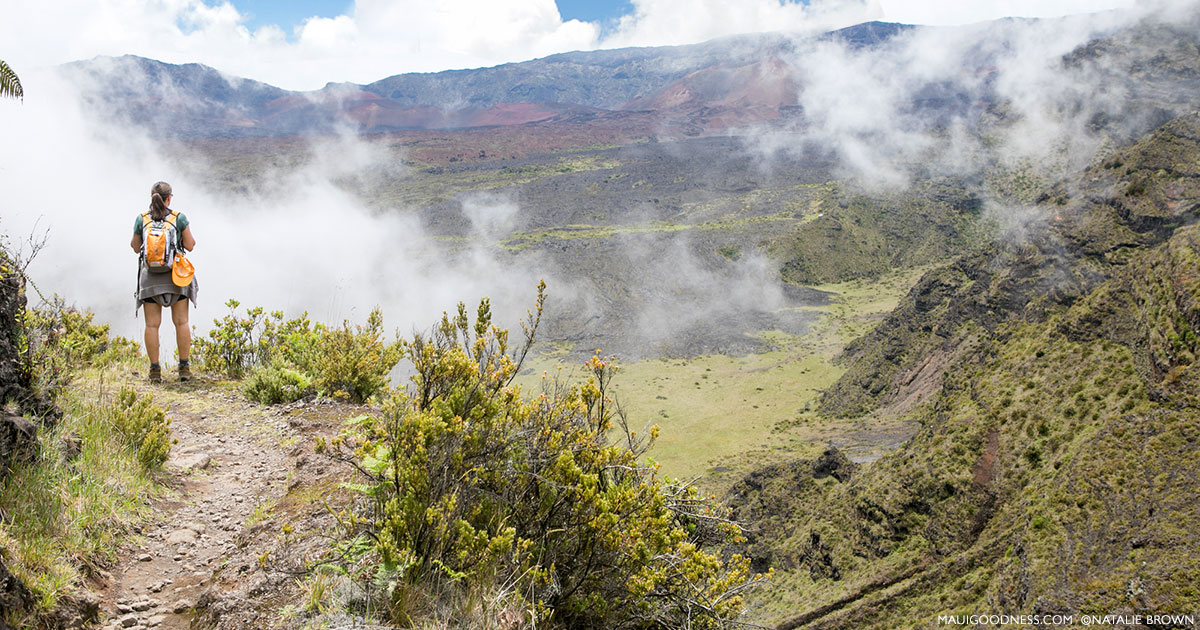Home to one of the most spectacular sunrises on earth, and deeply rooted in Hawaiian culture, history, and legend, Haleakala Crater is one of Hawaii’s most awe-inspiring visitor attractions. Thousands of visitors and residents alike make the 38-mile pilgrimage to Haleakala’s towering summit each year. Soaring 10,023 feet above sea level, the summit area boasts unparalleled views of Maui County, the Big Island, and the gaping crater that extends miles to the east.
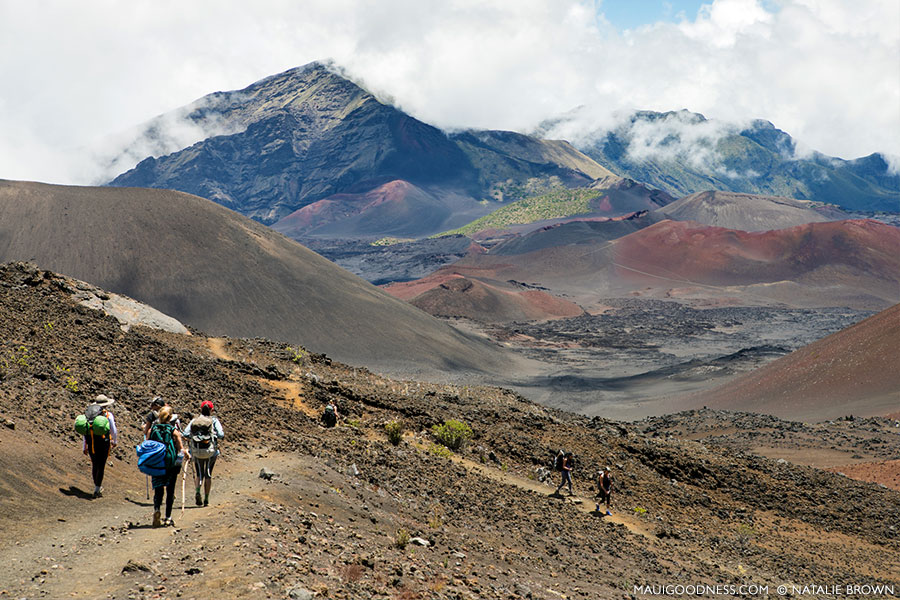
While a visit to the Haleakala summit is an impressive experience in itself, many visitors overlook the expansive network of trails, camping areas, and backcountry cabins that the national park has to offer. To truly begin to absorb the magic of this sacred place, it takes trekking into the crater’s depth and exploring the backcountry. Here we’ll break down the different trails and what you can expect when planning overnight stays in the crater. See the Haleakala Map.
HALEAKALA DAY HIKES
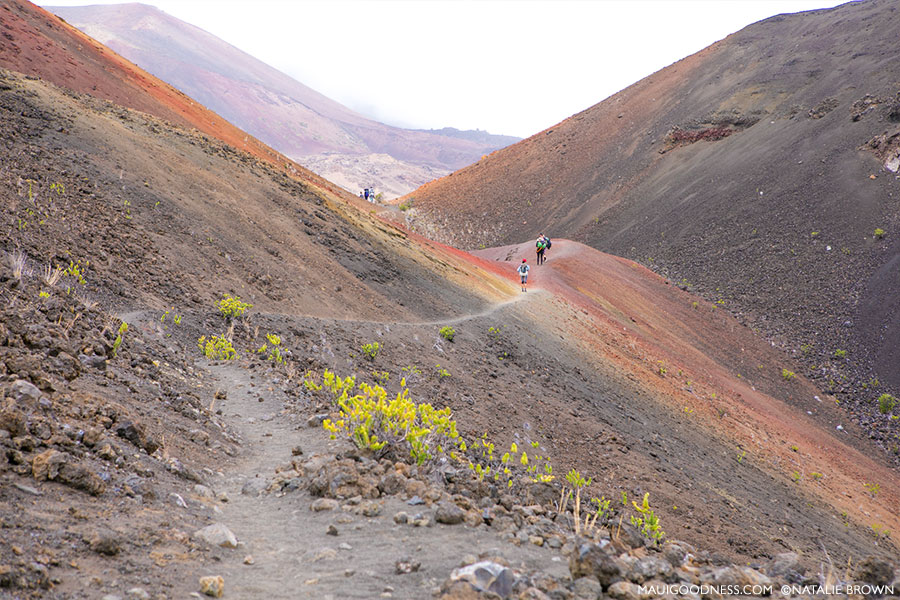
There are over 30 miles of trails to explore in Haleakala National Park, ranging from moderate day hikes to multi-day overnight treks. Two trailheads serve as the main access points into the crater: Sliding Sands (Keonehe’ehe’e) and Halemau’u.
Keonehe’ehe’e
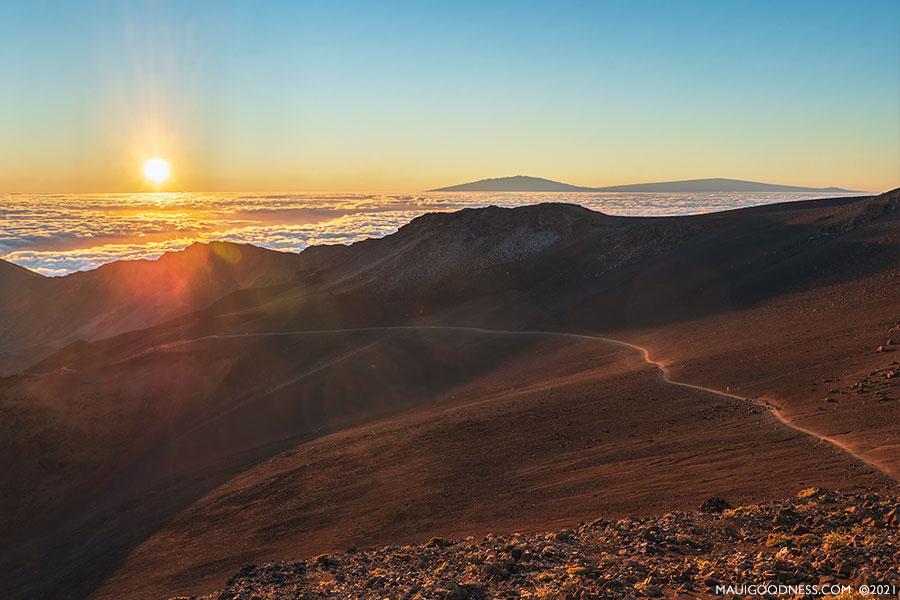
Otherwise known as Sliding Sands, Keonehe’ehe’e stretches 11 miles in total and descends 2,800 feet in just four miles before leveling out on the crater floor. The best option for a day hike on Keonehe’ehe’e is the five-mile round trip trek to Ka Lu’u o ka O’o cinder cone. This route will take hikers through the Mars-like desert of the summit area before reaching the dormant pu’u (cinder cone). Here hikers will have the opportunity to walk the entire rim of the pu’u and take in the amazing views from a unique vantage point. While five miles may not seem like much, the elevation makes the trek much more strenuous. Give yourself all day to complete this hike, take your time, and drink plenty of water.
Halemau’u
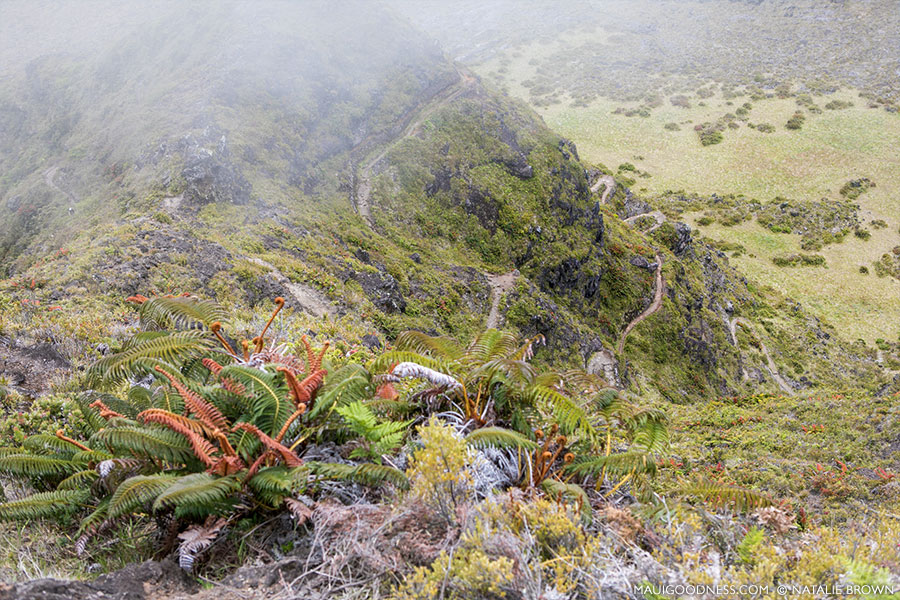
Like Sliding Sands, Halemau’u Trail winds deep into the belly of the crater- although this may be their only similarity. Halemau’u trailhead is surrounded by miles of shrubland and sits on the very edge of the enormous Ko’olau Gap. On clear days, hikers can peer into the rainforest coated Ko’olau, which descends to the coast in Keanae. A great day hike (or easy overnighter) is the trek to Holua Cabin. Holua sits only 3.7 miles from the park road, and the trailhead is at an elevation of about 8,000 feet- a bit less daunting than Sliding Sands’ 10,000-foot elevation. The trail reaches the crater floor through a series of winding switchbacks, which twist and turn their way down a sheer cliff, presenting fresh views around every corner.
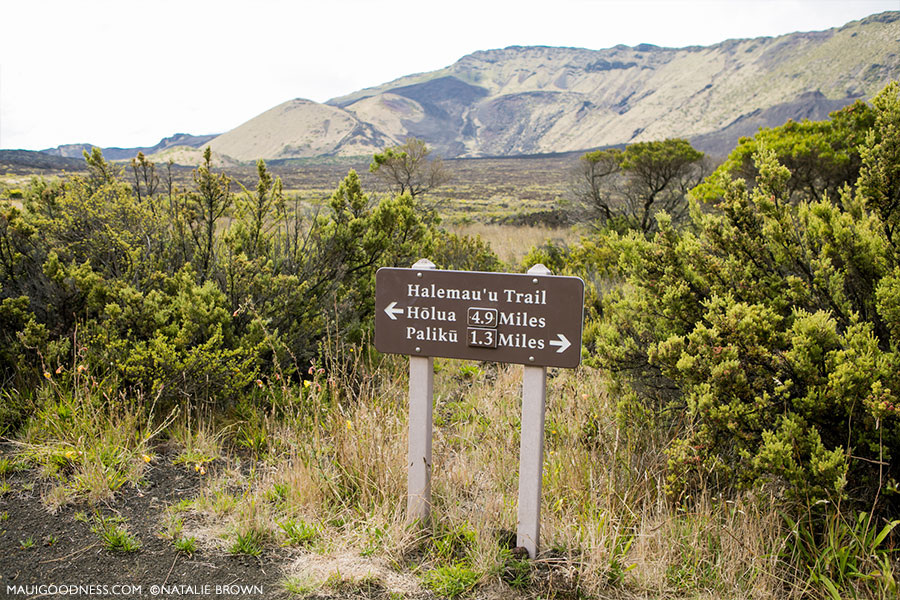
For experienced hikers, there is a through hike option that begins at the Keonehe’ehe’e trailhead and finishes at the Halemau’u trailhead. The trail totals 11 miles, passes through a handful of different microclimates, and falls and rises thousands of feet in elevation. Hikers often leave their car at the Halemau’u trailhead and utilize the hiker pick up area to catch a ride to the Sliding Sands trailhead before beginning their trek.
OVERNIGHT TREKS
(Please note that, as of this publish date, all cabins and camping areas are currently closed due to COVID-19. Haleakala National Park has not indicated when they may reopen, but we are confident they will remain available for public use in the future.)
There are three backcountry cabins located in the crater, two of which host campsites as well. Cabins can house 12 people and have amenities like a wood-burning stove, cooking utensils, and running water. Water within the park is not potable and must be filtered or treated before use. Cabins can be reserved online up to 180 days in advance for a fee of $75. Cabins are in high demand, so it’s best to start planning your stay and working on getting a reservation at least 6 months in advance.
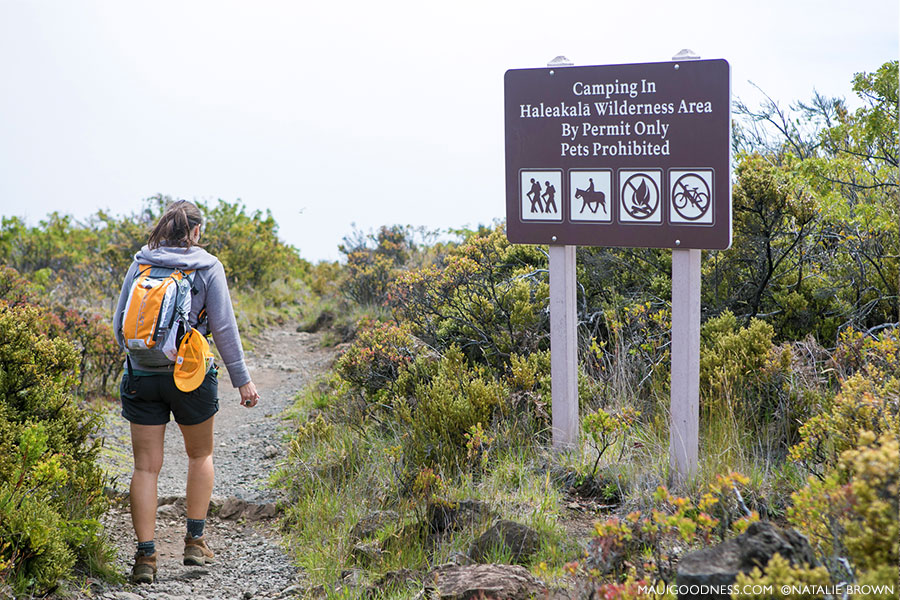
Camping permits are easier to come by, although that means adding extra weight to your pack to include your tent, stove, pots, and pans, etc. Permits are given on a first come first serve basis at the Haleakala Visitor Center from 8 am to 3 pm. Photo identification is required, as well as a short orientation with a park ranger. Wilderness camping permits are free.
Overnight temperatures often dip below freezing and the weather in the park can be unpredictable. It is important to be adequately prepared for any amount of time you plan to spend in the crater.
CABINS AND CAMPSITES
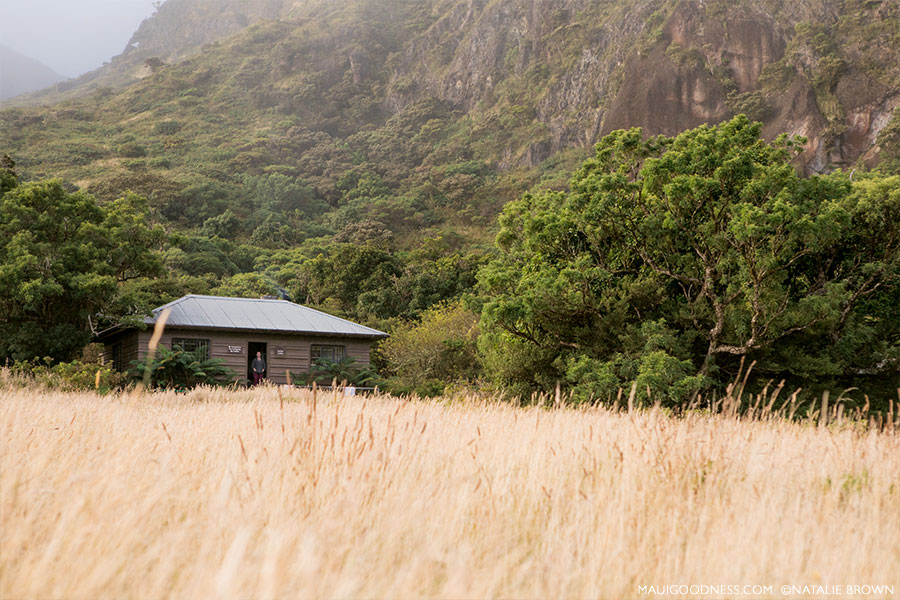
Kapalaoa Cabin
Located 5.5 miles from the summit on the Sliding Sands trail, Kapalaoa looks out at Haleakala’s colorful volcanic desert. Towering cinder cones rise from the crater floor, while Haleakala’s south wall looms just behind the cabin. Kapalaoa is a great overnight stopping point on the way to Paliku Cabin, located further east. Kapalaoa is the only cabin in the crater without a campsite.
Paliku Cabin and Campsite
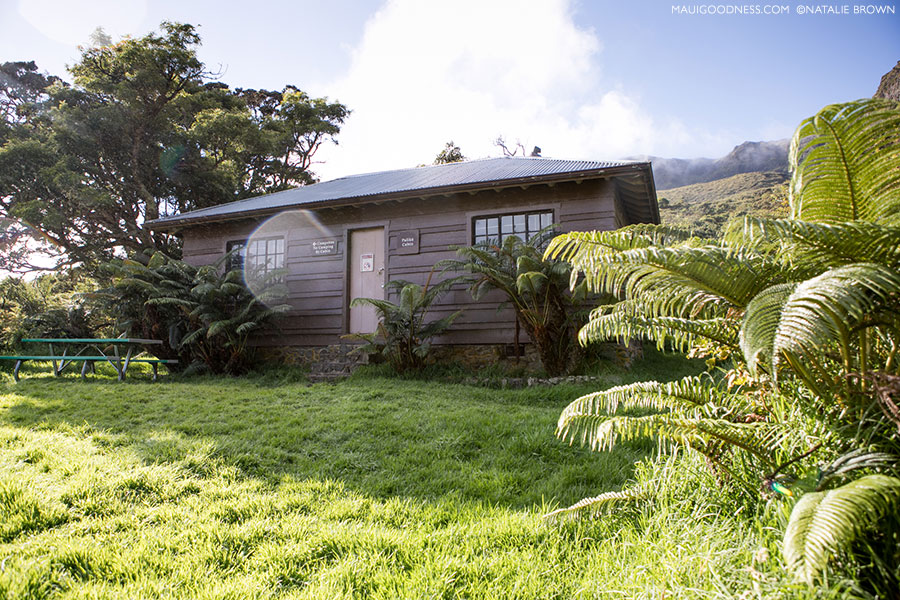
Tucked against the rainforested eastern crater wall, a visit to Paliku is like stepping back in time to ancient Hawaii. Unlike the sandy desert near the summit, Paliku is a largely untouched oasis surrounded by native trees. Nene’s and other native birds like the I’iwi are easily spotted in this area. Looking south, the Kaupo Gap opens up to reveal the backside of the island, and on clear days from the right angle, you might even be able to catch a glimpse of Kaupo Church. Paliku Cabin is undoubtedly one of the most magical places on Maui, and a perfect stopover for hikers on their way to the treacherous Kaupo Gap Trail.
Holua Cabin and Campsite
As the closest cabin to the park road, Holua is generally the busiest. Facing east and looking directly at the massive, 8,000-foot peak of Hanakauhi, Holua offers the best views for sunrise or moonrise. Just to the north of the cabin, the vast Ko’olau Gap opens the crater up and descends to the sea near Keanae. In early spring, the native Hawaiian ‘U’au birds make their way up the gap from sea level to the sheer cliffs surrounding Holua to nest. During this time, the night skies are filled with soaring ‘U’au’s, which are easily identified by their loud “oo-ah-oo” call.
Deep inside the crater, you’ll discover remnants of ancient Hawaii, like mysterious, timeworn rock walls, or trails that were used by Hawaiians pre-contact. The atmosphere is mystical and can even feel supernatural at times. While spending time in the crater, it is crucial that you tread lightly, stay on the trail, and don’t take anything or leave anything behind.
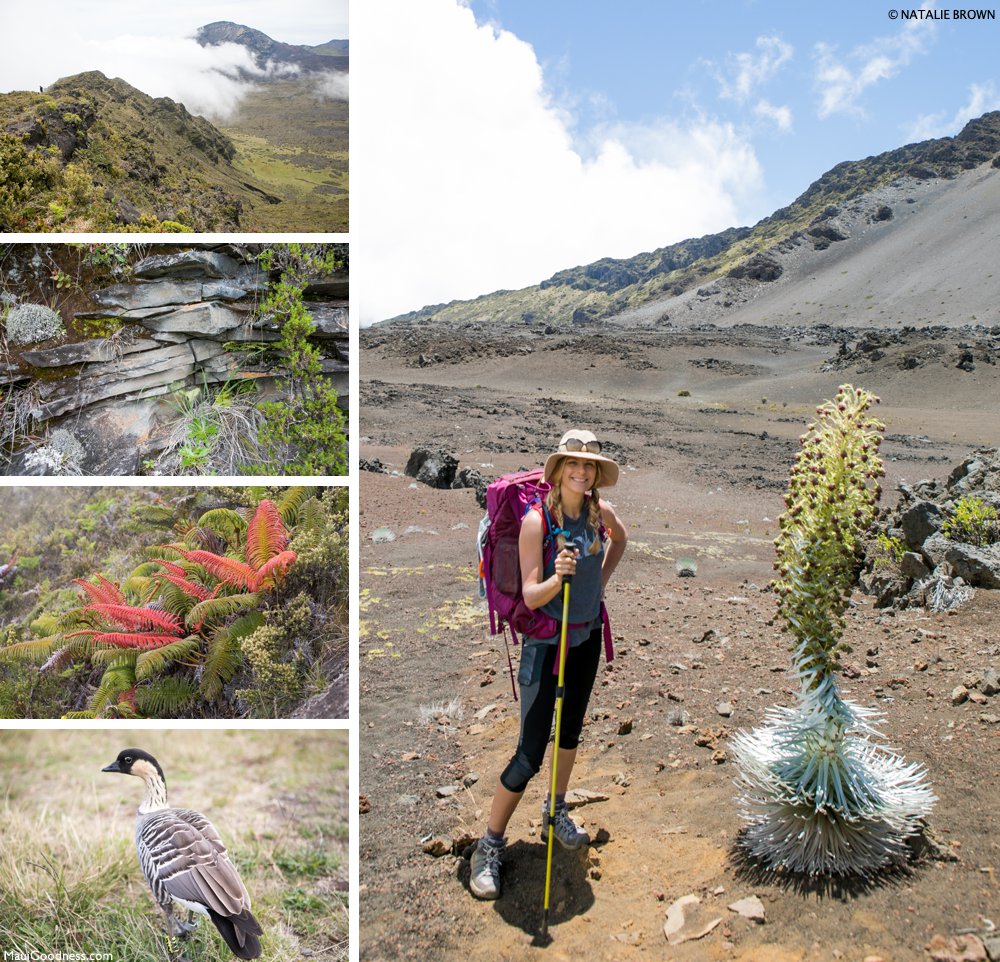
No matter how you choose to experience it, a jaunt into the Haleakala backcountry is far more fulfilling than any quick trip to the summit. You will connect to the land in a way that many visitors don’t get to experience. Chances are good, your adventure in the Haleakala backcountry will be a story worth telling for years to come.
Maui has some other cabins, including at high elevation. You can learn more about Polipoli Cabins and hiking for those not interested in going quite as high.
Explore Makawao
After adventuring within Haleakala Crater, check out Makawao Town. This sleepy little cowboy town has great shopping, a few popular restaurants, and beautiful art. Check out Hot Island Glass to see glassblowing live and some incredible glass art.

